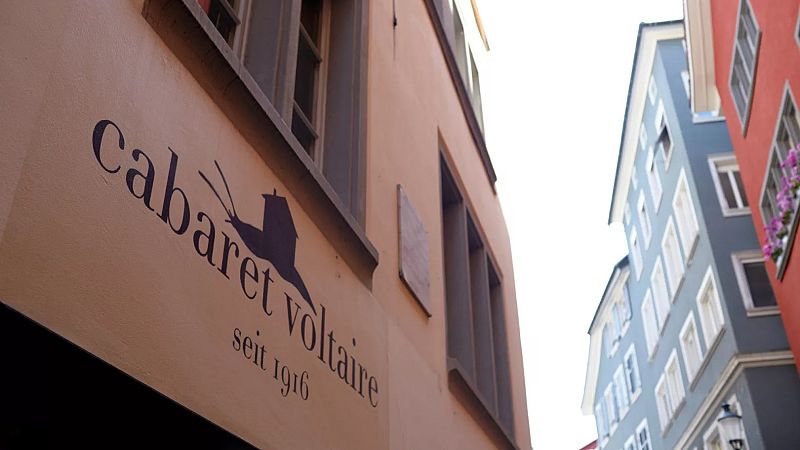Zurich is often celebrated for its pristine streets, financial prowess, and Alpine views. Yet beneath the polished surface lies a city deeply intertwined with artistic innovation, where creativity thrives in unexpected places — from luxury hotels to police stations, industrial districts to public squares.
The Dolder Grand hotel, nestled high above Lake Zurich, offers a perfect example of this artistic undercurrent. At first glance, it appears to be just another opulent retreat catering to the elite. But within its halls, Salvador Dalí and Joan Miró artworks blend seamlessly with guest rooms and corridors. The real surprise comes in the form of an unsettlingly realistic sculpture titled Traveller by Duane Hanson. Positioned in a quiet corner of the lobby, the figure appears so lifelike that guests often mistake him for a tired visitor — only to realize they’ve been staring at a masterful illusion.
This seamless integration of art into daily life defines Zurich’s creative spirit. The city’s history as a cradle of avant-garde movements like Dadaism — born at Cabaret Voltaire in 1916 — continues to influence its contemporary art scene. Zurich also played a pivotal role in shaping the Swiss Style, a design philosophy emphasizing clarity, grid systems, and minimalist typography, best exemplified by Helvetica.
Today, Zurich’s artistic energy extends far beyond galleries and museums. Public art is woven into the urban fabric through initiatives like Kunst im öffentlichen Raum (KiöR), which has curated over 1,300 works across the city. These range from monumental sculptures like Jean Tinguely’s whimsical Heureka at Zürichhorn to Niki de Saint Phalle’s radiant Guardian Angel greeting travelers at Zurich Main Station.
Even the city’s law enforcement buildings contribute to the cultural landscape. The Blüemlihalle, a vibrant fresco painted by Augusto Giacometti inside a local police station, is open to the public — no arrest required.
A short distance west of the historic old town, Zurich-West pulses with creative vitality. Once an industrial hub dominated by factories and warehouses, the area has transformed into one of Europe’s most dynamic cultural enclaves. At its center stands Löwenbräukunst, a former brewery now housing a constellation of contemporary art spaces. Inside, visitors can explore Kunsthalle Zürich, the Migros Museum für Gegenwartskunst, and renowned galleries like Hauser & Wirth.
What sets Zurich apart isn’t just the quality of its institutions but their proximity. Galleries, universities, collectors, and off-spaces are clustered within walking distance, fostering collaboration and spontaneous dialogue. Monthly events like Art Walk West invite locals and visitors alike to engage directly with the city’s evolving art scene.
Back in central Zurich, Kunsthaus Zurich remains the crown jewel of the city’s traditional art institutions. With works by Marc Chagall, Alberto Giacometti, and Sophie Taeuber-Arp, the museum balances historical reverence with contemporary experimentation. Recent exhibitions have explored digital art, feminist perspectives, and new media, reflecting the institution’s willingness to evolve.
Hotels, too, have embraced Zurich’s artistic identity. The 25hours Hotel Zurich West, designed by Alfredo Häberli, infuses bold colors and playful design elements throughout its interiors. Meanwhile, the Dolder Grand continues to blur the line between hospitality and curation. Its multimillion-dollar art collection includes pieces by Keith Haring, Takashi Murakami, and Sylvester Stallone, all integrated into everyday experiences — whether dining in a restaurant or sipping cocktails inspired by specific artworks.
In Zurich, art doesn’t sit behind velvet ropes or glass cases. It lives among people, in lobbies, train stations, and even alleyways. As Jacqueline Uhlmann, manager of Löwenbräukunst, aptly puts it: “It’s a place where something is made, not just shown.”







